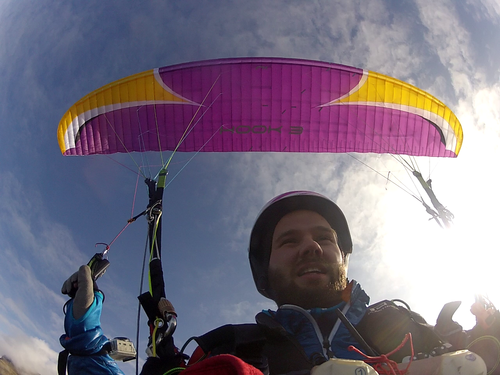Hook 3 25 |
|||||||||||||||||||||||||||||||||||||||||||||||||||||||||||||||||||||||||||||||||||||||||||||||||||||||||||||||||||||||||||||||||||||||||||


|
|||||||||||||||||||||||||||||||||||||||||||||||||||||||||||||||||||||||||||||||||||||||||||||||||||||||||||||||||||||||||||||||||||||||||||
Instability rating |
|||||||||||||||||||||||||||||||||||||||||||||||||||||||||||||||||||||||||||||||||||||||||||||||||||||||||||||||||||||||||||||||||||||||||||
|
|||||||||||||||||||||||||||||||||||||||||||||||||||||||||||||||||||||||||||||||||||||||||||||||||||||||||||||||||||||||||||||||||||||||||||
Glider characteristics |
|||||||||||||||||||||||||||||||||||||||||||||||||||||||||||||||||||||||||||||||||||||||||||||||||||||||||||||||||||||||||||||||||||||||||||
|
Launch preparations: average
launch characteristics: dynamic, delayed climb, needs gentle guidance, good feedback during inflation, moderate braking required, accelerates before zenith, control check difficult, high takeoff speed
asymmetric collapse: canopy colllapses at high angle to leading edge, high dynamics, total course change 270-360°, (4), fast course change rate, marked forward pitching 60-75°, (4), very high height loss 50-59 m, (4), high sink velocity 20-24 m/s, (3), collapse on opposite wingtip with course change >90°, (5), with tendency to cravat, (4), G-Force 3,5- 3,9 G, (4)
Frontal collapse: canopy collapses with low total collapse area, marked pitch backwards 45-60°, moderate pitch forwards 30-45°, moderate dynamics, course change 90-180°, (3), variable recovery behaviour, at times with stable closed frontal collapse, at times with automatic recovery, (4), usually symmetric recovery, simple pilot action required, (4), horseshoe, wingtips at front, Simple pilot action required to end height loss (4), moderate sink velocity 15-19 m/s, (2)
Spiral dives: rapid sink velocity increase, Very high G-Force 4,5-5,0 G, (4), Sink velocity after 720° <18 m/s, (3), High maximum sink velocity < 22 m/s, (3), sink velocity increase < 3 m/s on brake release, (1), Course change 540-720° after spiral exit, (4), high height loss during recovery 60-100 m, (3)
B-Stall: normal force required, moderate pitch backwards 15-30°, moderate pitch forwards 15-30°, stable sink phase, no tendency to deform, immediate return to normal airspeed, 8-10 m/s, height loss on recovery < 20 m
big ears: simple initiation, stable flight phase, immediate automatic recovery, Vsink unaccelerated 2,5-3 m/s, Vsink accelerated 3,5-4 m/s, Vunaccelerated 0-3 km/h less than trimspeed, Vaccelerated 5-8 km/h faster than trimspeed
Steering behaviour: dynamic, 65 cm brake travel range, very noticable brake pressure increasse, Late stall point, easily identifiable |
|||||||||||||||||||||||||||||||||||||||||||||||||||||||||||||||||||||||||||||||||||||||||||||||||||||||||||||||||||||||||||||||||||||||||||
Notes |
|||||||||||||||||||||||||||||||||||||||||||||||||||||||||||||||||||||||||||||||||||||||||||||||||||||||||||||||||||||||||||||||||||||||||||
|
en: Launch preparations: The lines on Niviuk's Hook 3 are also all sheathed with the exception of the top gallery, and are easy to sort. Its risers are also well arranged. The glider should be layed out in a curve to aid inflation Launch characteristic: Niviuk's Hook 3 needs to be layed out in a clean curve and inflated with the inner A line risers only, to prevent the ears overtaking the middle of the canopy on inflation. The canopy requires gentle but constant guidance and a jab on the brakes to stop acceleration just before the zenith. Keeping the canopy inflated during the control phase is not a problem, but the required ground speed is a little higher than with the other test gliders. Asymmetric Collapse: Niviuk's Hook 3 is clearly positioned as a high-end LTF B glider. Collapses at trimspeed are unproblematic and not difficult to recover from. At the top end of the speed range the glider design results in massive collapses where a large percentage of the collapsed wing stays inflated for longer and creates a large amount of resistance to the airflow. This makes it difficult to directly compare the Hook 3 with other gliders. Fully accelerated collapses were repeated several times by the test pilots to evaluate the gliders typical response characteristics. A massive collapse presents a large resistive area and results in the canopy diving forward rapidly, and changing course rapidly. Dives and course changes are often accompanied by collapses on the opposite wingtip with further resulting course changes. In some cases the opposing collapse cravated and remained tangled in the lines requiring pilot input to recover from. It is difficult to predict if the glider will collapse as violently under real-life conditions, or if this only occurs under test conditions. Front collapses: The remaining other three gliders, Niviuk's Hook 3, Gradient's Golden 4 and Gins' Atlas all have significantly more challenging behavior. All of these three gliders had tendencies to remain in a stable front stall after collapsing. Niviuk's Hook 3 showed this mostly after massive collapses, whereas the other two sometimes remained closed after medium sized collapses – recovery from massive collapses was usually fast and without pilot input. Spiral Dive: Niviuk's Hook 3, Gradient's Golden 4 and Gin Gliders Atlas were all very dynamic in the initialising phase. Of all the tested LTF-B gliders, the Atlas exited and recovered fastest, while the Hook 3 had the highest G-forces. B-Stall: No problems with B-stalls, and this manoeuvre can be recommended for rapid descents if required Big Ears: Very Easy. |
|||||||||||||||||||||||||||||||||||||||||||||||||||||||||||||||||||||||||||||||||||||||||||||||||||||||||||||||||||||||||||||||||||||||||||
Rating |
|||||||||||||||||||||||||||||||||||||||||||||||||||||||||||||||||||||||||||||||||||||||||||||||||||||||||||||||||||||||||||||||||||||||||||
|
Safety class 5 This class of paraglider reacts very demandingly to one or more of the following manoeuvres: frontal collapse, asymmetric collapse or spiral dive and may present pilots with a particular challenge.Very demandingly means that the above manoeuvres result in highly dynamic reactions from the glider, and/or large height losses. Critical subsequent glider reactions are also to be expected. Expert piloting skills achieved through constant practice, fast personal reaction times and precise pilot inputs are required to be able to immediately react to the above manoeuvres to maintain flight control and prevent large height loss or subsequent critical glider reactions. In particular, pilots should be able to recognise the onset of the above manoeuvres and be able to prevent or minimise their effects through immediate and precise pilot inputs. |
|||||||||||||||||||||||||||||||||||||||||||||||||||||||||||||||||||||||||||||||||||||||||||||||||||||||||||||||||||||||||||||||||||||||||||

